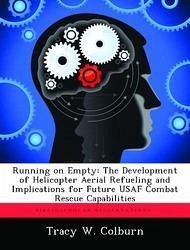By 1999 the total active United States Air Force fighter wing equivalents will have shrunk from 24 to 13 in only ten years. The declining defense budget means painful force structure decisions lie ahead. Even as funds are drying up, the armed forces are being called upon to execute contingencies in places such as Haiti, Somalia, Liberia, and Bosnia. The future appears very busy for Air Force rescue units as well. According to "Strategic Assessment 1996--Instruments of U.S. Power" by the National Defense University and the Institute for National Strategic Studies, "...U.S. armed forces will most likely be called upon to engage in numerous evacuation and rescue missions for Westerners over the next quarter of a century." It goes on to predict, "The rescue of U.S. military personnel under combat conditions, particularly downed flight crews, will also continue to be carried out on a fairly frequent basis." Ultimately it concludes, "The practice by certain societies of abusing U.S. military prisoners to put psychological pressure on the U.S. government and public will only make such rescue operations more imperative." To accomplish these long-range operations USAF rescue helicopters rely greatly on aerial refueling from HC-130 tanker aircraft.








